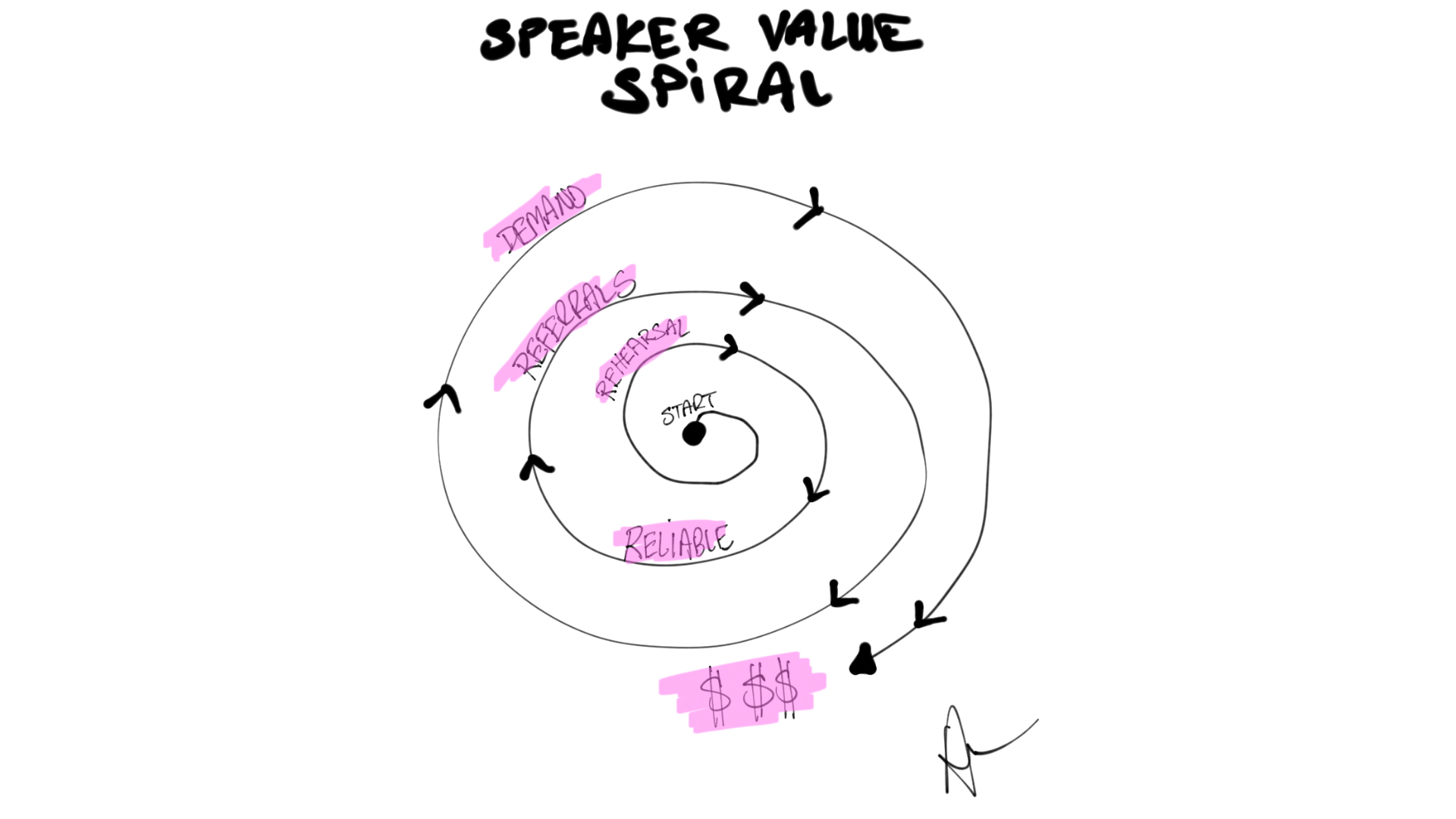More rehearsal means higher fees.
That’s because rehearsal makes your speech delivery more reliable… which makes you earn more referrals and stageside leads… which makes your demand higher… which means you can set higher fees.
See? In math terms, this is the transitive property in action! 🤓

I’m a big fan of rehearsal. You’ve probably figured that out by now.

But today, we'll look at how to manage your rehearsal schedule when you have multiple speeches ready for gigs.
Really, it’s a hard thing to balance.
… your new speech needs lots of rehearsal so it can gain momentum and earn leads…
… your older speech needs smoother transitions and tighter stories…
… and your even older-most-reliable-most-referred speech needs customization and updates to stay relevant.
This topic was inspired by a question from subscriber Amanda Lea Kaiser who asked about my rehearsal process for a specific speech.
Juggling all of this rehearsal for speeches – old and new – can sometimes result in something I call the Speaker Rehearsal Dilemma.
For example, last year my new speech was about digital doppelgangers. It required daily rehearsal so I could get it to the point at which I could earn higher and higher fees consistently. It needed lots of work until it could reliably generate stageside leads.
Meanwhile, I had three other speeches that were consistently being referred for gigs. These were my tried-and-true speeches that earned stageside leads and higher fees. Still, they needed to be refreshed and refined to stay relevant to my new audiences.
The 5-Minute Rehearsal Method for Newer Speeches
If you have a new speech you are still developing, then you’ll want to use something like my Five-Minute Rehearsal Method. This strategy will help you systematically improve every single section of your speech, just five-minutes at a time.

(Before you get excited, this method takes about one hour each day to complete. Don’t be confused by the name.)
With a new speech, you’ll focus on incremental improvements so the speech can mature to the fee that you want to quote. You’ll have to dedicate one hour every day to refine and rehearse that new speech so it gets tighter, the transitions get better, and your confidence gets stronger.
Your goal is to build that consistent, reliable delivery through regular rehearsal.
Your new speech won’t earn high fees right out of the gate, but if you keep refining it daily, you’ll gain traction faster and help you earn the breakthroughs you need to get to those higher fees.
Reliable Speeches Have Different Rehearsal Needs
On the other side of the equation, you probably have some older speeches that have reliably served you over the last several years. But just because these speeches are well-known and referred often, it doesn’t mean they're perfect as is.
You’ll want to keep them fresh so they can evolve with the times. This requires different rehearsal needs.
Unlike the new speech you’re working on, the older reliable speech has already been very well rehearsed. You could probably give that speech blindfolded with your arms tied behind your back and still make people burst into applause.
But it’s not perfect, right? It could still be improved.
For instance, my Loyalty Loop speech is one I’ve delivered many, many, many times. It’s still my second-most booked speech and I’ve been giving it for seven or eight years now.
Reliable speeches need a different kind of preparation in the days and weeks before a gig. You’ll need to stay sharp while customizing the speech for an upcoming audience.
With that in mind, here’s my four-part strategy for delivering those reliable speeches…







